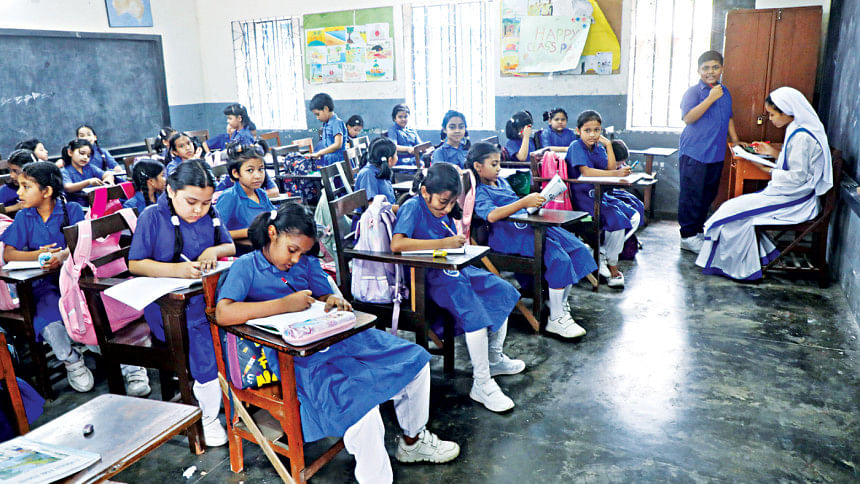In the middle of Farmgate's frantic rush, where buses roar and buildings crowd the sky, a quiet miracle unfolds each day. At Bottomley Home Girls' High School, the soft chirping of birds and the gentle rustle of leaves greet students as they step into a campus unlike any other in Dhaka.
The school's story stands out not just for academic excellence, but for its deep-rooted commitment to compassion. Since 1946, Bottomley has been more than a school—it has been a sanctuary. Born in the aftermath of the Second World War and amid the looming crisis of India's Partition, it began as a haven for 10 to 15 war-affected girls.
Famine, disease, and devastation had orphaned thousands across Bengal. In response, philanthropist R. P. Saha, the Holy Cross Sisters, and SMRA nurses sprang into action. Touched by their cause, British official John Miller Bottomley donated land to the CSC Sisters to build a home for the displaced.
From those bleak beginnings, a lasting legacy began to grow. With the steadfast support of Bishop Timothy John Crowley, CSC, and the tireless devotion of the Holy Cross Sisters, the vision took shape—a school and orphanage offering shelter, learning, and hope. It was named Bottomley Home Girls' High School, honouring the man whose generosity transformed a place of loss into a sanctuary of education. Today, it remains true to that mission, housing 145 orphaned girls and serving around 1,500 students—where the past meets the present in a spirit of care, resilience, and shared purpose.

Students like Teresa Ribero (Koraiya), one of the first residents, captured the spirit of the school in her essay The Unfinished Memoirs, praising the missionaries' commitment to nurturing good human beings and a better society. After her father's death, Teresa was separated from her mother and placed in the care of the missionary sisters—a home that would go on to redefine her life.
She reflected, "Raising a hundred orphaned children was no easy task—especially for the foreign sisters, so far from their own families and homeland. But never, not once, did we feel unloved. There was no shortage of warm clothes, colourful toys, or nourishing meals. We played. We learned. We grew."
Initially a primary school until 1954, Bottomley gradually expanded, adding lower secondary in 1955, and then achieving full secondary status in 1967. In 1968, the institution was officially upgraded to a high school.
Each class at Bottomley Home Girls' High School includes, on average, seven orphaned students who study alongside their peers from outside the home, fostering an inclusive and equal learning environment for all.
Sister Mary Jane, SMRA, the current headmistress, shared, "The girls residing in the home come from remote parts of Bangladesh. Most of them have lost both parents, and many struggle to understand the standard language we speak. That's why we provide them with intensive care and support, so they can progress alongside other students—not only academically but also in life."
From the wreckage of war and the sorrow of lost childhoods, Bottomley Home Girls' High School rose as a sanctuary of learning and love. For more than seventy years, it has not only educated minds but also healed hearts—quietly nurturing generations of resilient young women. Its legacy endures not just in exam results or accolades, but in the lives it has transformed—each student a testament to the power of compassion in shaping a better world.
Saudia Afrin is a journalist and development practitioner with a deep commitment to environmental issues. She is also an alumna of Bottomley Home Girls' High School.


Comments